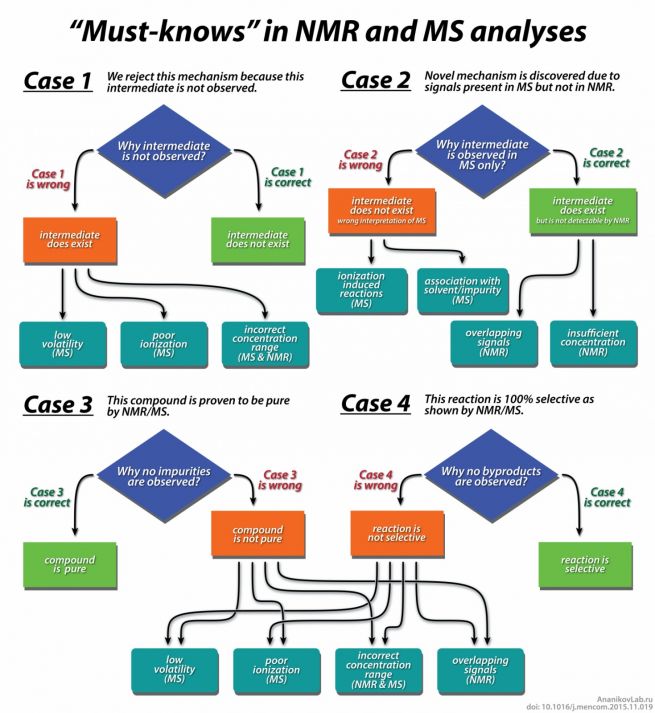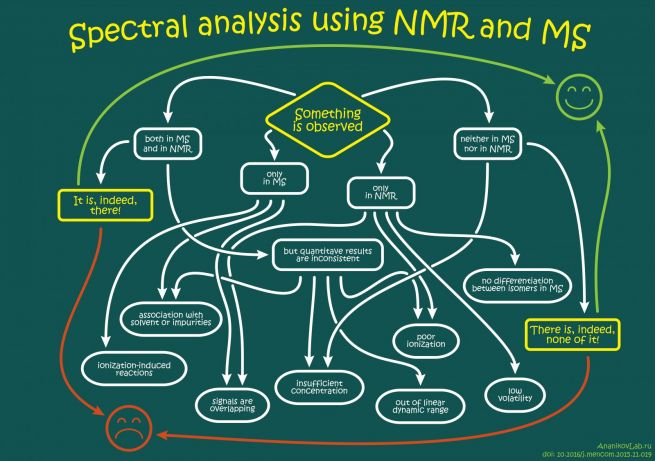How sensitive and accurate are routine NMR and MS instruments?
Figure 1. Mind map for spectral measurements.
Just a decade or two ago, NMR and MS measurements were more difficult to carry out, and the instruments were primarily operated by highly qualified, dedicated personnel. Since that time, the paradigm has changed dramatically.
Researchers have made significant advances in spectral instrumentation. NMR and MS measurements have become ubiquitous research tools for life sciences, chemistry, catalysis, material science and engineering applications. Furthermore, a wave of progress in software development further advanced spectral technologies. Currently, a complicated NMR or MS machine can be easily operated via personal computer, iPad or even a smartphone. Upon completion of a short training session, graduate and undergraduate students can measure spectral data themselves.
However, an increasing number of spectral errors, inconsistent measurements and misinterpretations have recently appeared in the modern literature, representing a serious side effect. Often, inconsistent spectral data can be found in the supporting information of research articles that deal with chemistry and life sciences. Further inconsistencies are possible as more complicated instruments become commonly available.

Figure 2. Four not so simple cases of apparently "simple" measurements.
A group of researchers from Zelinsky Institute have addressed technical questions concerning routine analytic characterization and provided a concise description of the most important features regarding the accuracy and sensitivity of NMR, EI-MS and ESI-MS measurements. They document "must knows" that are necessary in order to achieve reliable measurements. Although the principles of these analytic measurements are fairly well known, common mistakes are often made during routine spectral studies.
More information: Andrey M. Tsedilin et al. How Sensitive and Accurate are Routine NMR and MS Measurements?, Mendeleev Communications (2015). DOI: 10.1016/j.mencom.2015.11.019




